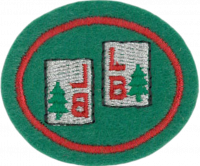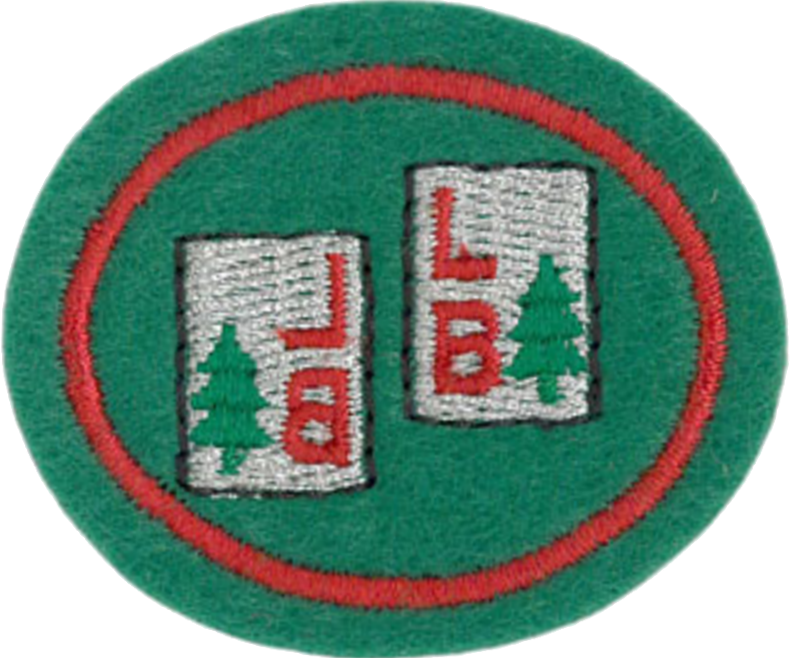Difference between revisions of "AY Honors/Letterboxing/Answer Key/es"
From Pathfinder Wiki
< AY Honors | LetterboxingAY Honors/Letterboxing/Answer Key/es
(Created page with "</noinclude>") |
|||
| (19 intermediate revisions by 2 users not shown) | |||
| Line 1: | Line 1: | ||
| − | + | {{HonorSubpage}} | |
| − | + | <!--{{Honor Master|honor={{#titleparts:{{PAGENAME}}|1|3}}|master=Recreation}}--> | |
| − | {{ | ||
| − | |||
| − | |||
| − | |||
| − | |||
| − | |||
| − | |||
| − | |||
| − | }} | ||
| − | |||
| − | {{Honor Master | ||
| − | |||
| − | |||
| − | |||
<section begin="Body" /> | <section begin="Body" /> | ||
{{ansreq|page={{#titleparts:{{PAGENAME}}|2|1}}|num=1}} | {{ansreq|page={{#titleparts:{{PAGENAME}}|2|1}}|num=1}} | ||
| Line 41: | Line 27: | ||
{{CloseReq}} <!-- 1f --> | {{CloseReq}} <!-- 1f --> | ||
{{ansreq|page={{#titleparts:{{PAGENAME}}|2|1}}|num=1g}} | {{ansreq|page={{#titleparts:{{PAGENAME}}|2|1}}|num=1g}} | ||
| − | <noinclude></noinclude> | + | <noinclude></noinclude> |
<noinclude></noinclude> | <noinclude></noinclude> | ||
{{CloseReq}} <!-- 1g --> | {{CloseReq}} <!-- 1g --> | ||
{{ansreq|page={{#titleparts:{{PAGENAME}}|2|1}}|num=1h}} | {{ansreq|page={{#titleparts:{{PAGENAME}}|2|1}}|num=1h}} | ||
| − | <noinclude></noinclude> | + | <noinclude></noinclude><noinclude></noinclude> |
| − | |||
| − | <noinclude></noinclude> | ||
{{CloseReq}} <!-- 1h --> | {{CloseReq}} <!-- 1h --> | ||
{{ansreq|page={{#titleparts:{{PAGENAME}}|2|1}}|num=1i}} | {{ansreq|page={{#titleparts:{{PAGENAME}}|2|1}}|num=1i}} | ||
<noinclude></noinclude> | <noinclude></noinclude> | ||
| − | |||
<noinclude></noinclude> | <noinclude></noinclude> | ||
| Line 59: | Line 42: | ||
{{ansreq|page={{#titleparts:{{PAGENAME}}|2|1}}|num=2}} | {{ansreq|page={{#titleparts:{{PAGENAME}}|2|1}}|num=2}} | ||
<noinclude></noinclude> | <noinclude></noinclude> | ||
| − | <!-- 2. | + | <!-- 2. Hacer una lista de cinco comportamientos que se debería practicar mientras se hace letterboxing. --> |
| − | |||
| − | |||
| − | |||
| − | |||
| − | |||
| − | |||
| − | |||
| − | |||
<noinclude></noinclude> | <noinclude></noinclude> | ||
| Line 73: | Line 48: | ||
{{ansreq|page={{#titleparts:{{PAGENAME}}|2|1}}|num=3}} | {{ansreq|page={{#titleparts:{{PAGENAME}}|2|1}}|num=3}} | ||
<noinclude></noinclude> | <noinclude></noinclude> | ||
| − | <!-- 3. | + | <!-- 3. Conocer las herramientas básicas de orientación al --> |
<noinclude></noinclude> | <noinclude></noinclude> | ||
{{ansreq|page={{#titleparts:{{PAGENAME}}|2|1}}|num=3a}} | {{ansreq|page={{#titleparts:{{PAGENAME}}|2|1}}|num=3a}} | ||
| − | <noinclude></noinclude> | + | <noinclude></noinclude><noinclude></noinclude> |
| − | |||
| − | <noinclude></noinclude> | ||
{{CloseReq}} <!-- 3a --> | {{CloseReq}} <!-- 3a --> | ||
{{ansreq|page={{#titleparts:{{PAGENAME}}|2|1}}|num=3b}} | {{ansreq|page={{#titleparts:{{PAGENAME}}|2|1}}|num=3b}} | ||
| − | <noinclude></noinclude> | + | <noinclude></noinclude><noinclude></noinclude> |
| − | |||
| − | <noinclude></noinclude> | ||
{{CloseReq}} <!-- 3b --> | {{CloseReq}} <!-- 3b --> | ||
{{ansreq|page={{#titleparts:{{PAGENAME}}|2|1}}|num=3c}} | {{ansreq|page={{#titleparts:{{PAGENAME}}|2|1}}|num=3c}} | ||
<noinclude></noinclude> | <noinclude></noinclude> | ||
| − | |||
| − | + | {{clear}} | |
| − | { | ||
| − | |||
| − | |||
| − | |||
| − | |||
| − | |||
| − | |||
| − | |||
| − | |||
| − | |||
| − | |||
| − | |||
| − | |||
| − | |||
| − | |||
| − | |||
| − | |||
| − | |||
| − | |||
| − | |||
| − | |||
| − | |||
| − | |||
| − | |||
<noinclude></noinclude> | <noinclude></noinclude> | ||
| Line 120: | Line 66: | ||
{{ansreq|page={{#titleparts:{{PAGENAME}}|2|1}}|num=4}} | {{ansreq|page={{#titleparts:{{PAGENAME}}|2|1}}|num=4}} | ||
<noinclude></noinclude> | <noinclude></noinclude> | ||
| − | <!-- 4. | + | <!-- 4. Diseñar, crear y grabar su propio sello. --> |
| − | + | {{clear}} | |
| − | + | {{clear}} | |
<noinclude></noinclude> | <noinclude></noinclude> | ||
| Line 130: | Line 76: | ||
{{ansreq|page={{#titleparts:{{PAGENAME}}|2|1}}|num=5}} | {{ansreq|page={{#titleparts:{{PAGENAME}}|2|1}}|num=5}} | ||
<noinclude></noinclude> | <noinclude></noinclude> | ||
| − | <!-- 5. | + | <!-- 5. Como unidad, club o familia, encontrar las pistas y luego localizar al menos 10 cajas de tesoro, cuatro de estas pueden ser parte de una serie. Individualmente, «sellar» su sello, grabar el sello de la caja del tesoro encontrada en su libro personal y registrar su hallazgo en la página web. --> |
| − | + | {{clear}} | |
| − | + | {{clear}} | |
| − | + | {{clear}} | |
<noinclude></noinclude> | <noinclude></noinclude> | ||
{{CloseReq}} <!-- 5 --> | {{CloseReq}} <!-- 5 --> | ||
<noinclude></noinclude> | <noinclude></noinclude> | ||
| − | == | + | ==Referencias== |
| − | + | {{clear}} | |
| − | |||
| − | |||
| − | |||
| − | |||
| − | |||
| − | |||
| − | |||
| − | |||
<noinclude></noinclude> | <noinclude></noinclude> | ||
| − | + | {{CloseHonorPage}} | |
Latest revision as of 19:39, 25 July 2022
1
Definir los siguientes términos:
1a
Tesoro
1b
Caja con cartas
1c
Nombre del camino/ruta
1d
Libro personal
1e
Sellar
1f
Autoestopista
1g
Caja hibrida
1h
Caja de bono
1i
Intercambio
2
Hacer una lista de cinco comportamientos que se debería practicar mientras se hace letterboxing.
3
Conocer las herramientas básicas de orientación al
3a
Caminar
3b
Usar la brújula
3c
Saber cómo encontrar los cuatro puntos cardinales sin brújula
4
Diseñar, crear y grabar su propio sello.
5
Como unidad, club o familia, encontrar las pistas y luego localizar al menos 10 cajas de tesoro, cuatro de estas pueden ser parte de una serie. Individualmente, «sellar» su sello, grabar el sello de la caja del tesoro encontrada en su libro personal y registrar su hallazgo en la página web.
Referencias


